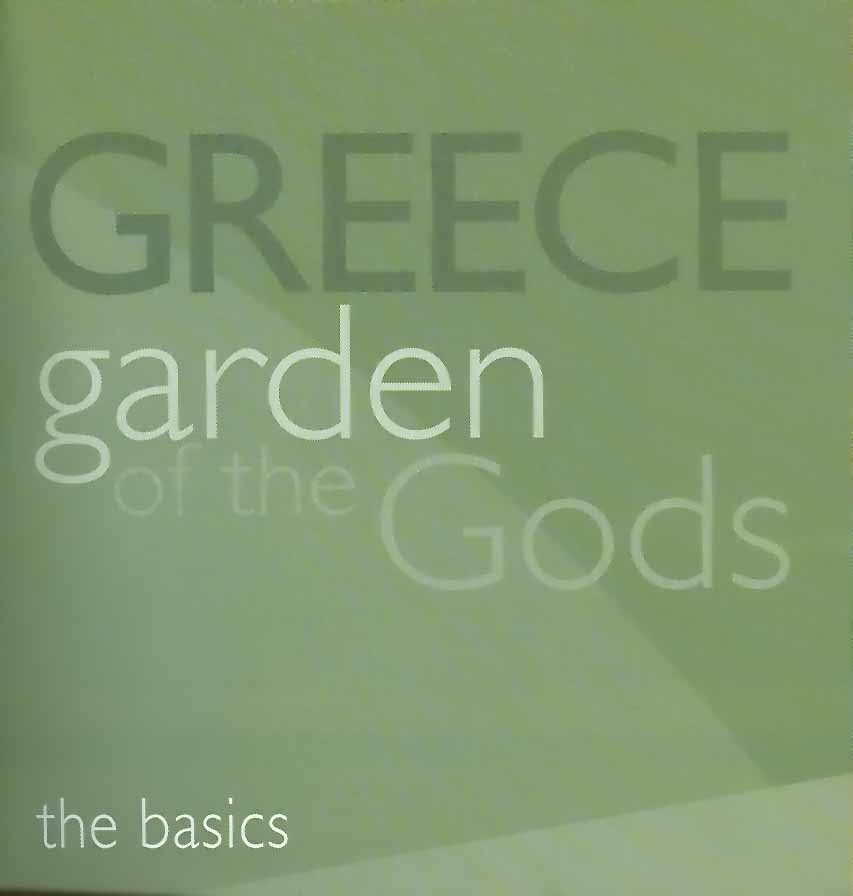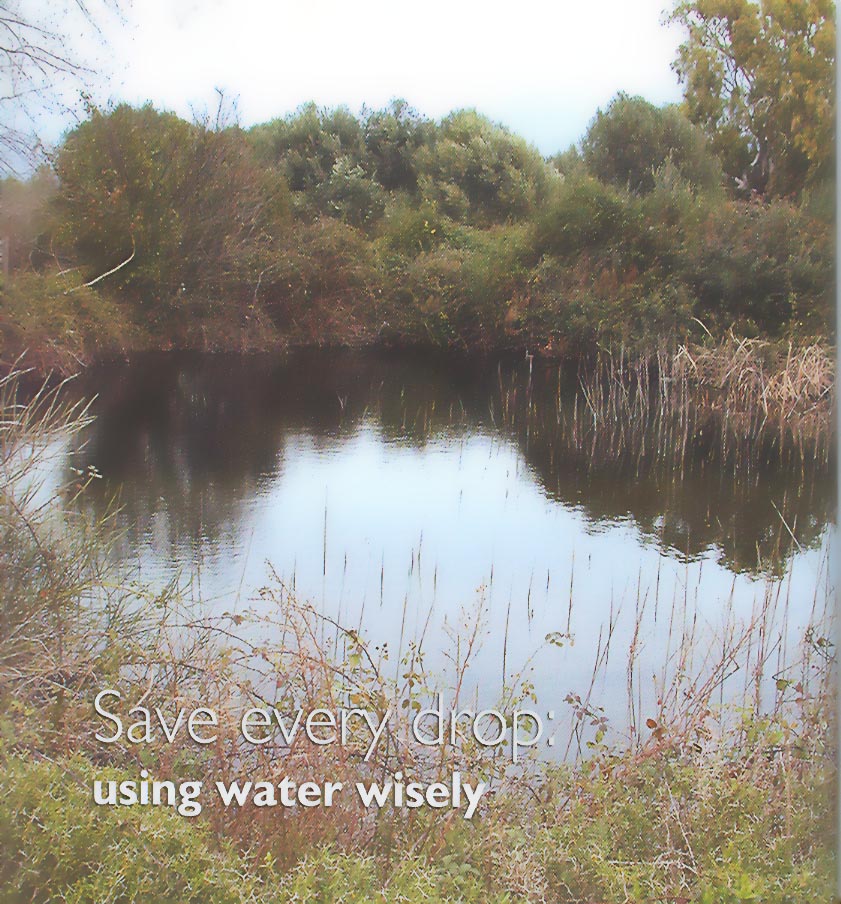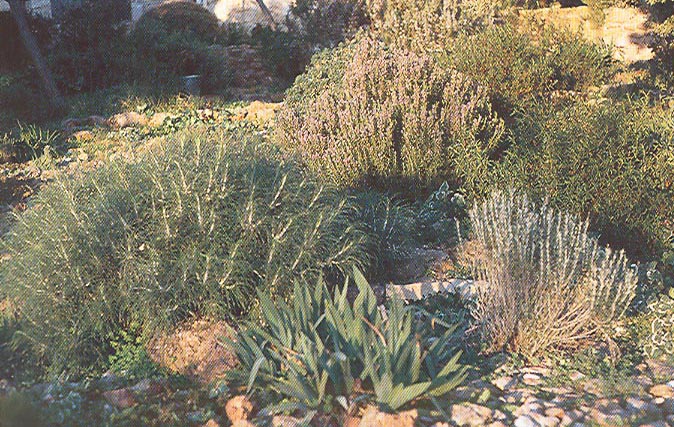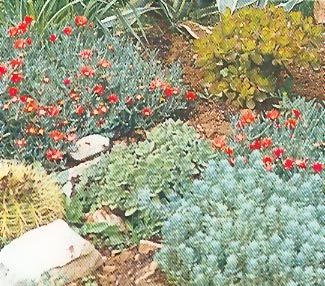 |
||
|
|
||
  |
||
|
By Jennifer Gay Athens News |
||
| Twice a year, I visit family and friends in England. I consider myself rather lucky: most of them live in the Southwest, where the countryside is gentle and rolling, a patchwork of every shade of green. The plants are turgid and fresh - even at the height of summer I can smell the dampness in the early moming and late evening, as dew falls. This lushness is a sharp contrast to the aridity of Greece. Of course, it is the hot, dry summers that attract so many visitors to Greece... and make life difficult for the plants. Evapo-transpiration far exceeds rainfall during these months, so the countryside simply dries up in many areas. Some native species go into summer dormancy and any plants that are not adapted to these conditions die, unless given extra water to help them through. In a garden or landscape situation, even Mediterranean and aridclimate plants appreciate a drink, especially during their first three years of establishment. After all, water - along with warmth, light and nutrients - is one of the essential factors for healthy plant development. |
||
|
|
 An effective garden can be made using drought-tolerant native plants |
|
|
Saline levels can be checked, which at least alerts you to problems: however, inexpensive remedies are difficult to come by. Using salttolerant plants is probably the most economical and effective option. |
||
A water shortage will probably become evident long before a serious decline in quality. However, purity will undoubtedly become critical for gardeners. Plentiful good water is, after all, a basic ingredient of a healthy garden, That's why it's so important to make the best use of available water by working in harmony with the climate and the local resources. Heidi Gildemeister may have coined the phrase "waterwise gardening" in her book Mediterranean Gardening: A Waterwise Approach. She is certainly a pioneer of the careful use of water. During the past 25 years, she has sculpted a distinctive and natural garden out of a maquis landscape, the dense community of evergreen trees and shrubs typical of the Meditenranean Basin. Experimenting with many water-saving techniques, she proves that a considered choice of plants - as well as careful siting, planting and mulching - cuts down on consumption. |
 Oleander (Nerium oleander), Corfu |
|
Cacti and succulents have traditionally been considered the doyennes of drought-tolerant schemes, but Gildemeister shows that many Meditenranean-climate natives make good candidates for a waterwise garden, Once established, they mostly survive with winter rain alone. Beautiful gardens can be made using a combination of plants from the local hillsides mixed with drought-tolerant plants from other Meditenranean and arid areas. Autumn is the waterwise time to plant. Trees and shrubs put in the ground then have more time to establish during the rainy months: thus they cope better with the following summer's drought. It is vital that plants settle themselves before undergoing stress. When planting, make sure you maintain the water content of the root ball: drench the planting hole, as well as the plant. The excavated soil should be thoroughly mixed with organic matter and used to backfill the hole. Water again after planting, to maximise contact between the roots, pot compost and the surrounding soil. |
||
|
The rate at which soil is able to absorb water can present a limitation when watering. |
 Succulents are the doyennes of waterwise gardening |
|
Watering is a more complex matter than is commonly assumed. For a small garden or balcony, watering cans and hoses are still viable options. However, for larger plots, irrigation systems considerably ease the load of this gardening chore. The Arabs were great exponents of controlled irrigation during the Muslim Golden Age (roughly 750-1250 AD). They not only channelled natural springs and rivers, but also constructed elaborate subterranean conduits (qanats), which tapped groundwater. Methods have changed a lot, but the principles remain the same. Even with modern computerised systems, it is important never to take irrigation systems for granted. Vigilance is always needed: regularly check that all the plants are receiving the water they require. Power failures, pipe damage and breakdowns can interrupt the system, and, in the worst case scenario, could result in plants dying. Water should be applied where it is most effective - at the root zone. It is better to water seldom and thoroughly, as opposed to often and shallowly. Small amounts are quickly lost to evaporation. With infrequent deep doses, the water sinks into the soil; the plants then send their roots down in search of the moisture, anchoring into the earth. The deeper the root system, the more effective the plant becomes in water take-up. Conversely, frequent shallow watering encourages roots in the top 5-IOcm of soil, making the plants more susceptible to drought. Watering deeply once a week during summer is sufficient for most established plants of Mediterranean origin. Nonnative and exotic specimens may need more help. Pots and lawns are more difficult to manage in this way. Grass swathes need frequent watering to keep them looking good (a reason to reconsider their use in the Mediterranean). Because their roots develop near the surface they are vulnerable to drought. Containers also tend to dry out quickly and demand daily watering during the summer. With terracotta, always douse the pot as well, so that the clay doesn't suck moisture from the soil. Early morning is the optimum time to water, because it ensures that moisture is present during the hours of photosynthesis. Watering in the late evening or at night is almost as effective as there is relatively little moisture lost from the soil then. Ideally, avoid watering in the middle of the day. The drops of cold water on hot leaves can concentrate the sun's rays to such intensity that the foliage scorches. Of course, much more liquid is lost to evaporation when the ground and air are at their hottest and driest. Also considerable damage can be done by suddenly changing the temperature of the plant, which watering on a hot day does. The amount of water needed depends on the soil, the situation (sheltered or exposed) How much potted plants require is dependent on season, the species and the type of compost used: for example, peat-based blends are light but absorb many times their weight in water. With time you can gauge by pot weight how quickly the plant uses the moisture, how much water to give and how often. A saucer underneath the container acts as a guide - if there is water in the dish, the plant does not need more liquid (remove it in the rainy season, though. Roots rot if left sitting in a waterlogged substrate). However, the simplest way to check moisture is to stick your finger in the soil you'll soon tell if the plant needs water. Gardeners in the cooler climes of England may not have the watering worries of Greece . .. nor do they have the possibility of sitting on the terrace at midnight without shivering. It really pays to organise efficient watering and look after the soil if you plan to enjoy a Mediterranean summer in your garden. |
||
(Posting date 26 June 2006) HCS readers can view other excellent articles by this writer in the News & Issues and other sections of our extensive, permanent archives at the URL http://www.helleniccomserve.com./contents.html
All articles of Athens News appearing on HCS have been reprinted with permission. |
||
|
||
|
2000 © Hellenic Communication Service, L.L.C. All Rights Reserved. http://www.HellenicComServe.com |
||

